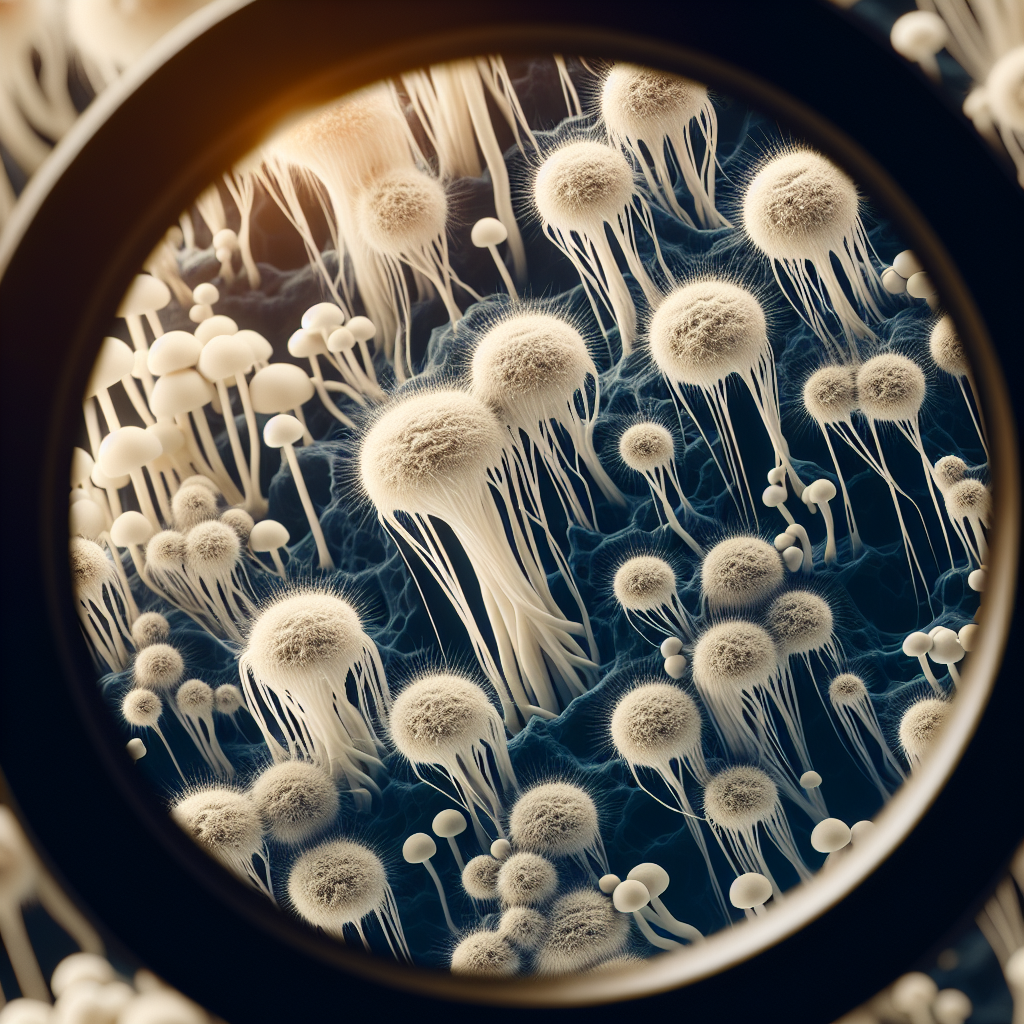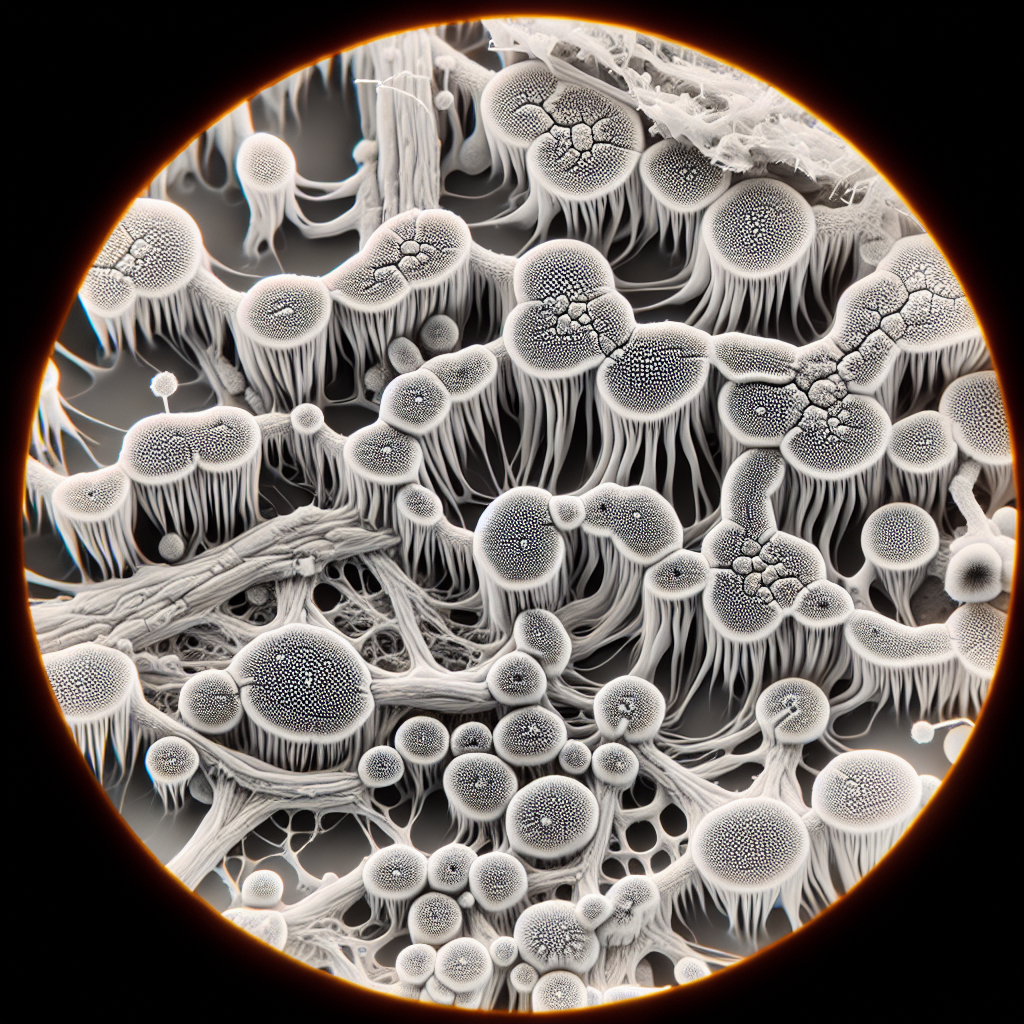In the riveting read “Understanding the Growth and Impact of Mold and Mycelium,” you’ll explore the intricate life cycle of these fascinating fungi. This essential discussion uncovers their role in various environments, illustrating their remarkable ability to both spoil our food and rebalance ecosystems. With its focus on the growth of mold and mycelium, the article delivers you deep into their billion-year evolution, offering a broad understanding of their impact on both global biodiversities and human health. Embark on this enlightening journey that captures the perplexing duality of these humble organisms whose quiet growth among us hold a significant bearing on our lives.
Understanding Mold and Mycelium: Definitions and Distinctions
In the world of biology, both mold and mycelium have significant roles. However, they are often misinterpreted or mistaken for one another due to their similar nature. This article aims to provide clarity by offering comprehensive definitions, distinctions, growth processes, impacts, and future directions of mold and mycelium.
Definition of Mold
Mold is a type of fungus that grows in multicellular filaments. These microorganisms can be found virtually anywhere, both indoors and outdoors. They reproduce through tiny, microscopic spores that float around in the air and can enter a building through windows, vents, and doors, or adhere to clothing and pets. When these spores find the right conditions – namely damp, warm environments with organic material available as food – they can start to grow and spread.
Definition of Mycelium
Mycelium, on the other hand, forms the vegetative part of a fungus. Mycelium is a mass of branching, thread-like structures, known as hyphae, which expand underground in search of water and nutrients. Fungi, including mushrooms, use mycelium to extract and transport nutrients from the surrounding environment.
Differences and Commonalities between Mold and Mycelium
Understanding how mold and mycelium differ and how they’re related is critical in the broader context of science. Mold and mycelium are both part of the fungal kingdom, indicating they share common characteristics such as being eukaryotes, utilizing spores for reproduction, and thriving best in moist environments. However, when it comes to differences, the obvious one lies in their structure: mold grows in multicellular filaments, whereas mycelium is composed of hyphae. Additionally, molds are typically seen as a problem, while mycelium often orchestrates valuable ecological processes.
The Growth Process of Mold
Knowing how mold grows aids in its prevention and management. In most cases, it requires four conditions for growth: mold spores, a food source, suitable temperatures, and sufficient moisture.
The Role of Spores in Mold Growth
Mold spores play a pivotal role in the fungus’s life cycle. These are tiny reproductive cells that can withstand extreme environmental conditions and remain dormant until the right conditions present themselves. When they land in a conducive environment, they germinate, forming fungal threads (hyphae) that spread into an interwoven mass (mycelium) and start feeding on the available substrate.
The Impacts of Environmental Factors
Mold growth is significantly influenced by environmental conditions. Elevated moisture levels, present due to leaky pipes or high humidity, can provide a conducive environment for mold growth. Similarly, suitable temperatures, usually between 20-30 degrees Celsius, can induce spore germination. Lastly, organic materials such as wood, drywall, or carpet provide abundant food sources.
Various Stages of Mold Life Cycle
The life cycle of mold entails four stages: spore dispersion, spore germination, hyphal growth, and spore production. After spores are dispersed and land on a suitable substrate, they germinate, leading to hyphae that form the mycelium. This mycelium network then grows, eventually producing new mold spores that continue the cycle.

The Growth Process of Mycelium
The life of mycelium follows a different course and is guided by a different intent – the creation and dispersion of more spores for reproduction.
The Role of Spores in Mycelium Growth
Similar to molds, mycelium also begins from a single spore. This spore germinates, forming hyphae, which then multiply and expand, forming a mycelial network. This network is responsible for nutrient and water transportation, supporting the fungus’s growth and development.
How Mycelium Forms Networks
Mycelium forms intricate networks known as mycelial mats through hyphal aggregation into rhizomorphic structures that enable longer-distance growth. These mats can be several inches thick and spread over vast areas, helping in nutrient and water intake, as well as spreading new spores.
The Life Cycle of Mycelium
After the spore germinates, mycelial threads start branching out to form a mycelial network. When nutrients or water become scarce, it forms fruit bodies that produce and disperse new spores to continue the lifecycle.
Conditions Favoring the Growth of Mold and Mycelium
There are specific conditions that molds and mycelium require for growth. While they have their unique needs, they share some common factors, such as temperature, humidity, nutrients, and light.
Optimum Temperature and Humidity for Mold and Mycelium Growth
Both molds and mycelium prefer warm, moist environments for growth. The optimal temperature for mold growth is between 20-30°C, while for mycelium, it is between 24-27°C. Both also require high humidity, with mold needing above 60%, and mycelium above 70%.
Role of Nutrients and Light in their Growth
Molds and mycelium derive their nutrients from the substrate they grow on, whether it’s soil, wood, or organic debris. Light plays a less important role, as some species grow better in darker spaces, while others can even tolerate direct sunlight.
Impact of pH levels and Oxygen
Both molds and mycelium thrive in slightly acidic to neutral pH levels. Oxygen is crucial for their metabolic processes, further emphasizing the importance of open, ventilated spaces.

Types of Mold and Mycelium
There is an array of species within the world of molds and mycelium, each with unique characteristics and behaviors.
Different Mold Species and their Unique Characteristics
Several species of molds exist, including the commonly recognized Aspergillus, Penicillium, and Stachybotrys (black mold). They vary in color, texture, and growth rates. Some species are harmful to humans, causing allergic reactions or respiratory issues.
Variety in Mycelium and their Properties
Like mold, mycelia have various species including, Armillaria, which forms large networks, and Fusarium, which often cause plant diseases. Different species have distinct reproductive strategies, growth rates, and nutrient absorption methods.
Comparison of Different Types of Mold and Mycelium
While different species may exist within each, molds and mycelium share similarities in their growth process, reproduction, and environmental needs. Their differences lie primarily in their structures, behaviors, and overall perception, with molds generally seen as harmful and mycelium as beneficial.
Impacts of Mold Growth
The impacts of mold span from issues to human health to damages to buildings and significant economic consequences.
Effects of Mold on Human Health
Mold can have adverse effects on human health, especially for individuals with allergies or asthma. Symptoms can include sneezing, itching, red eyes, or skin rashes. In severe cases, it can lead to respiratory illnesses.
Impacts of Mold on Buildings and Infrastructure
Mold can damage buildings and infrastructure by deteriorating the materials they grow on, particularly wood and drywall. This leads to structural issues that can be costly to repair.
Economic Consequences of Mold Growth
Mold growth can result in significant economic consequences, including property devaluation, increasing insurance premiums, and expensive eradication efforts. It can also lead to lost productivity in workplaces affected by mold contamination.
Impacts of Mycelium Growth
Conversely, mycelium often brings beneficial impacts, supporting ecosystem functionality, industrial applications, and soil fertility.
Benefits of Mycelium in Ecosystems
Mycelium plays a crucial role in ecosystems, maintaining soil health, supporting plant growth, and cycling nutrients. It also forms symbiotic relationships with certain plants, aiding in their nutrient uptake.
Potential uses of Mycelium in Industry
In the industrial sphere, mycelium is being explored for innovative uses such as bioremediation, sustainable packaging, biofabrication, and the food industry.
Influence of Mycelium on Soil Health and Fertility
Mycelium benefits soil health by breaking down organic matter into nutrients, improving soil structure, and preventing soil erosion. Biodiversity can be enhanced, and nutrient cycling processes optimized.
Preventing and Controlling Mold Growth
Mold growth prevention and control methods vary, from increasing ventilation to using dehumidifiers and following hazardous materials handling and cleanup procedures.
Effective Strategies for Mold Prevention
Some strategies for mold prevention include fixing leaky pipes promptly, maintaining low humidity levels, improving ventilation, and using mold-resistant building materials.
Role of Dehumidifiers and Air Cleaners
Dehumidifiers and air cleaners can also effectively prevent mold growth by maintaining optimal humidity levels and cleaning the air of mold spores.
Hazardous Materials Handling and Cleanup Procedures
Proper handling and cleanup procedures for contaminated materials are essential to prevent the spread of mold. This includes using appropriate personal protective equipment, discarding contaminated materials securely, and following specific cleaning instructions.
Harnessing Mycelium Growth for Sustainability
Mycelium offers promising possibilities for sustainability. From bio-remediation and sustainable building materials to mushroom farming, the potential is enormous.
Utilizing Mycelium in Bio-Remediation
Mycelium’s ability to absorb and break down contaminants makes it incredibly valuable for bio-remediation efforts. It can cleanse polluted soil and water, restoring ecosystems health.
Exploring Mycelium as a Sustainable Building Material
Mycelium is being explored as a natural, sustainable building material. When grown within a mold, it can create solid blocks useful for insulation and packaging. It’s biodegradable, meaning it leaves minimal environmental impact.
Potential of Mycelium in Mushroom Farming
Mushroom farming thrives on the power of mycelium. By providing the right conditions, mycelium can be encouraged to fruit mushrooms, opening possibilities for food production and new business opportunities.
Future Directions in Mold and Mycelium Research
There’s much to uncover in the fields of mold and mycelium. Emerging techniques, innovations, and overcoming challenges are at the forefront of research in these areas.
Emerging Techniques for Studying Mold and Mycelium
Techniques such as DNA sequencing and electron microscopy are valuable tools for studying mold and mycelium. They allow a more in-depth analysis of these organisms, uncovering new information about their biology, behavior, and lifecycles.
Innovations in Utilizing Mold and Mycelium
As our understanding of these organisms deepens, so does the scope for their application. Innovations range from mold-based antibiotic production to mushroom-based meat substitutes, showing the vast potential these organisms possess.
Challenges and Opportunities in Mold and Mycelium Research
Despite several advancements, challenges persist. Some of these include genetic manipulation difficulties, controlling their growth, and the lengthy cultivation period. However, the scientific community sees these as opportunities for learning, innovating, and transforming our world on various levels.
